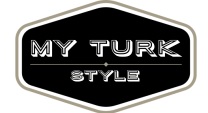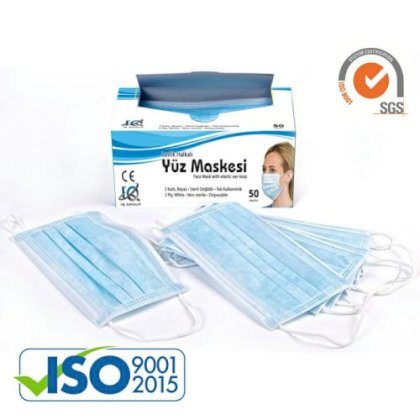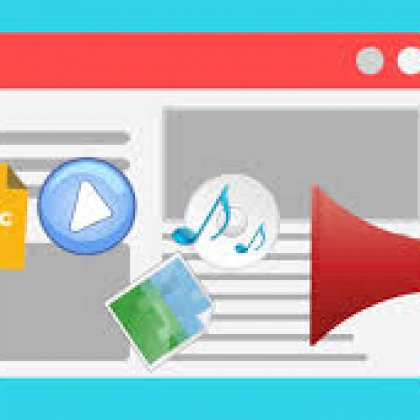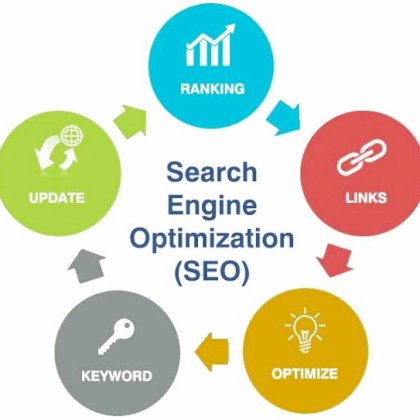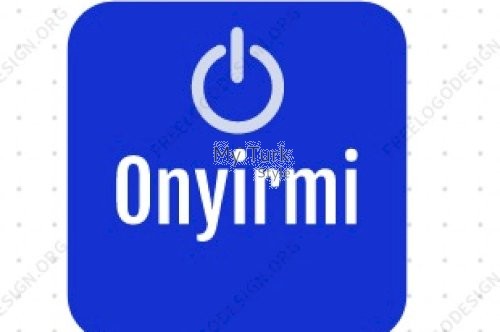How do I add my website to Google Search?

add to me google search Google has undoubtedly become the go-to search engine for millions of people around the world. However, as technology progresses, users are constantly looking for ways to enhance their online search experience. In recent years, Google has introduced several new features and tools to cater to these demands, one of which is "Add to Me." This feature allows users to save and organize search results directly within their Google account. With the ability to create personalized collections, add notes, and share with others, Add to Me revolutionizes the way users gather and access information. Whether it's research, shopping, or planning a trip, this feature offers a convenient and efficient way to keep track of valuable search results.
How to Improve Your Website's Search Engine Ranking
In today's digital era, having a strong online presence is crucial for the success of any business. One of the key factors that determines your website's visibility and traffic is its search engine ranking. In this article, we will explore the strategies and steps you can take to improve your website's search engine ranking and attract more organic traffic.
Keyword Research: The first step towards improving your website's search engine ranking is conducting thorough keyword research. Understanding the search terms and phrases that your target audience is using is essential for optimizing your website's content. There are several tools available, such as Google Keyword Planner and SEMrush, that can help you identify relevant keywords related to your industry.
On-Page Optimization: Once you have identified your target keywords, it's important to incorporate them naturally into your website's content. This includes optimizing your meta tags, headings, and image alt-texts. Focus on creating unique and informative meta descriptions that accurately describe the content on each page.
Quality Content: Creating high-quality, valuable content is key to both engaging your audience and boosting your search engine ranking. Make sure your articles, blog posts, and website pages are well-written, informative, and provide real value to your readers. Additionally, make use of internal linking to help search engines understand the relationships between different pages on your website.
Mobile-Friendly Design: With the increasing use of smartphones and tablets, having a mobile-friendly website is no longer optional. Google prioritizes websites that provide a seamless mobile browsing experience. Ensure that your website is responsive and adapts to different screen sizes.
Page Speed: Slow-loading websites not only frustrate users but also have a negative impact on search engine rankings. Optimize your website's performance by minimizing code, compressing images, and leveraging browser caching. Regularly monitor and improve your website's speed to provide the best user experience.
Backlink Building: Building high-quality backlinks is essential for improving your website's authority and search engine ranking. Reach out to relevant websites and industry influencers to request backlinks to your content. Additionally, creating shareable content and actively promoting it on social media can help generate organic backlinks.
Monitor and Analyze: Finally, it's important to regularly monitor and analyze your website's performance. Utilize tools like Google Analytics to track your website's traffic, user behavior, and conversion rates. This data will help you identify areas for improvement and make data-driven decisions to further optimize your website's search engine ranking.
In conclusion, improving your website's search engine ranking requires a combination of keyword research, on-page optimization, quality content creation, mobile-friendly design, page speed optimization, backlink building, and continuous monitoring. By implementing these strategies and staying up-to-date with the latest SEO trends, you can boost your website's visibility, attract more organic traffic, and ultimately drive business growth.
Using the AIDA Model: Crafting Compelling Headlines for Your Content In the world of digital content, capturing the attention of readers is a challenging task. With the constant bombardment of information, it's crucial to create headlines that stand out and make readers stop in their tracks. One effective approach to achieving this is by using the AIDA model, which stands for Attention, Interest, Desire, and Action. By following this model, you can craft headlines that not only grab attention but also drive readers to take the desired action. First and foremost, let's talk about capturing attention. In today's fast-paced world, you only have a few precious seconds to make an impression. That's why it's crucial to create headlines that are intriguing and irresistible. Start with a compelling question or a thought-provoking statement that resonates with your target audience. By doing so, you'll instantly grab their attention and make them want to learn more. Once you have their attention, it's time to foster their interest. Provide valuable insights, statistics, or intriguing facts that make readers curious to delve deeper into your content. Remember to keep it concise and impactful. Your headline should be a sneak peek into the valuable information that awaits them. Moving on to the desire phase. Here, your goal is to create a sense of urgency or a need for readers to take action. Highlight the benefits they will gain by reading your content or utilizing your products and services. Show them how your expertise can solve their problems or fulfill their desires. By emphasizing the value they stand to gain, you'll evoke a sense of desire within them. Lastly, it's time to drive them to take action. Whether it's subscribing to your newsletter, downloading a free guide, or making a purchase, your headline should compel readers to take that next step. Use action-oriented words and phrases that create a sense of urgency, such as "Get Started Today" or "Limited Time Offer." By making it clear what action you want readers to take, you increase the chances of conversion. Crafting compelling headlines using the AIDA model requires careful consideration of keywords. Incorporate relevant keywords naturally into your headline, ensuring they flow seamlessly with the rest of the content. This will not only optimize your headline for search engines but also enhance its impact on readers. In conclusion, using the AIDA model to craft compelling headlines can greatly improve the effectiveness of your content. By capturing attention, fostering interest, creating desire, and driving action, you can engage readers and motivate them to take the desired action. Remember to use keywords strategically, maintain a formal tone, and provide valuable insights throughout your content. With these techniques, you'll be on your way to creating headlines that stand out and captivate your audience.
Organizing Your Content: Creating a Hierarchical Structure for Better Readability
As a content creator or marketer, you know how crucial it is to captivate your audience and compel them to engage with your content. One way to achieve this is by organizing your content using a hierarchical structure. This not only enhances readability but also makes it easier for readers to navigate through the information you provide.
But what exactly is a hierarchical structure? Simply put, it's a system of organizing your content in a way that establishes a clear hierarchy, with main ideas at the top followed by subtopics and supporting details. This structure helps readers grasp your message more easily and ensures that they can find relevant information quickly.
So how can you create a hierarchical structure for your content? Let's explore some key steps:
| Step | Description |
|---|---|
| 1 | Identify your main topic: Start by determining the main focus of your content. This will serve as the primary category under which all other subtopics will fall. |
| 2 | Create subtopics: Once you have identified your main topic, brainstorm and create relevant subtopics that support and expand on the main idea. These subtopics should seamlessly flow from the main topic and provide valuable insights. |
| 3 | Arrange content hierarchy: Now, organize your content by arranging your subtopics in a logical order. Start with the most important subtopic and progressively move towards the supporting details. This ensures a smooth flow and helps readers follow along effortlessly. |
| 4 | Use formatting elements: Enhance the visual appeal of your hierarchical structure by using formatting elements like headings, bullet points, and numbering. These not only break up the content but also make it easier for readers to scan and locate specific information. |
Implementing a hierarchical structure in your content comes with numerous benefits. Firstly, it enhances readability by breaking down complex information into manageable chunks. This makes it more digestible and increases the likelihood of your audience retaining key points.
Secondly, a hierarchical structure improves navigability by allowing readers to quickly skim through your content and find information relevant to their needs. This can boost engagement and reduce bounce rates, as readers can easily locate what they're looking for.
Lastly, organizing your content hierarchically helps search engines understand and index your information better. By using heading tags and arranging your content logically, you can improve your SEO rankings and increase organic traffic to your website.
In conclusion, organizing your content using a hierarchical structure is essential for better readability and improved engagement. By following the steps outlined above and utilizing formatting elements, you can create an informative and easily navigable piece of content that resonates with your audience. So next time you create content, remember to prioritize hierarchy and watch your readership soar.
Creating Unique and Captivating Headlines: Tips for Effective Content Marketing
When it comes to content marketing, one of the most crucial elements is the headline. A compelling headline has the power to capture the attention of readers and entice them to click through and consume your content. In this article, we will explore some techniques and tips for creating unique and captivating headlines that will effectively enhance your content marketing efforts.
1. Understand your target audience: The first step in crafting a captivating headline is to understand your target audience. Get into the mindset of your readers and think about what will resonate with them. What are their pain points and desires? By understanding their needs, you can create headlines that address their problems and offer solutions.
2. Use attention-grabbing words: Incorporate attention-grabbing words in your headlines to pique curiosity and engage readers. Words like "secret," "powerful," "essential," and "proven" can create a sense of urgency and make readers eager to learn more.
3. Be specific and concise: In order to stand out from the crowd, it's important to be specific and concise with your headlines. Avoid generic and vague wording, and instead, focus on providing a clear and concise message. This will help your headline to be more impactful and increase the chances of readers clicking through.
4. Use numbers and lists: Including numbers and lists in your headlines can be highly effective in capturing attention. Research has shown that headlines with numbers tend to perform better than those without. For example, "10 Tips for" or "5 Strategies to" are more likely to grab readers' attention and make them want to read further.
5. Optimize for SEO: While creating captivating headlines is important, it's equally crucial to optimize them for SEO. Incorporate relevant keywords in your headlines naturally, without compromising the clarity and quality of the headline. This will help improve your search engine rankings and make it easier for your target audience to find your content.
Conclusion:
In conclusion, crafting unique and captivating headlines is a crucial aspect of effective content marketing. By understanding your target audience, using attention-grabbing words, being specific and concise, using numbers and lists, and optimizing for SEO, you can create headlines that captivate readers and encourage them to click through. Remember to continuously test and experiment with different headline variations to find what works best for your audience. With practice and persistence, you can master the art of creating headlines that drive engagement and improve your content marketing efforts.
Aligning Subheadings with your Article's Main Topic: Enhancing Coherence and SEO
When it comes to creating content for your website or blog, it is crucial to pay attention to the structure and organization of your article. One key element that often gets overlooked is the proper alignment of subheadings with the main topic of your piece. In this article, we will delve into the importance of ensuring that your subheadings accurately reflect and enhance the coherence of your article, all while boosting your search engine optimization (SEO).
Subheadings serve as guideposts for your readers, helping them navigate through your content and grasp the key ideas and concepts. Therefore, it is imperative to align your subheadings with the main topic to provide a seamless reading experience. A well-structured article not only improves readability but also helps search engines understand the relevance and context of your content, ultimately enhancing your website's visibility in search results.
One way to align your subheadings with your article's main topic is by utilizing relevant keywords. By incorporating essential keywords into your subheadings, you are not only signaling to search engines what your content is about but also helping readers identify the key focus areas. For instance, if your article is about organic cooking, your subheadings could include phrases such as "Benefits of Organic Ingredients" and "Tips for a Sustainable Kitchen."
In addition to incorporating keywords, it is crucial to maintain a logical flow of ideas throughout your article. Each subheading should contribute to the overall coherence of your content and be directly related to the main topic. By doing so, you create a seamless transition between different sections of your article, making it easier for readers to follow along and comprehend the information presented.
| Benefits of Aligning Subheadings | Enhanced coherency | Improved readability | Increased SEO |
|---|---|---|---|
| Improved Coherence: | By aligning your subheadings with the main topic, you ensure that each section reinforces the central idea, resulting in a more cohesive and interconnected article. | With well-aligned subheadings, readers can quickly scan through your content, identify relevant sections, and find the information they need, thus improving overall readability. | Search engines rely on subheadings to understand the relevance and context of your content. Proper alignment enhances your website's visibility and increases the chances of ranking higher in search results. |
In conclusion, the alignment of subheadings with your article's main topic is vital to ensure coherence, readability, and search engine optimization. Properly aligned subheadings, infused with relevant keywords, guide readers seamlessly through your content, while also indicating to search engines the relevance and context of your article. So, the next time you sit down to write an engaging piece, remember to give due attention to your subheadings and watch your content soar in both quality and visibility.
For more information on this topic, you can refer to (this article).
Frequently Asked Questions
Google Search is a web search engine developed by Google. It allows users to search the internet for information, websites, images, videos, and more.
To add your website to Google Search, you need to submit your website URL to Google by using the Google Search Console. This helps Google discover and index your webpages.
No, adding your website to Google Search does not guarantee better rankings. Google uses complex algorithms to determine search results based on various factors, including relevance, quality, and user experience.
To improve your website's visibility on Google Search, you can optimize your website's content for relevant keywords, build high-quality backlinks, improve website loading speed, and create a positive user experience.
Google Search features include snippets, knowledge panels, featured snippets, image carousels, news, maps, videos, and more. These features enhance search results and provide users with quick access to information.
Google updates its search algorithms frequently. They make thousands of changes to their algorithms every year to provide users with the most relevant and useful search results.
No, you cannot pay to rank higher on Google Search. Google's search results are determined organically based on their algorithms and various ranking factors. However, you can run paid advertisements on Google through Google Ads.
Google uses a complex algorithm to determine the order of search results. It takes into account factors such as relevance, quality, user experience, and many other ranking signals to provide the most useful and accurate results to users.
No, it is not necessary to submit a sitemap to Google Search Console. However, submitting a sitemap can help Google discover and index your webpages more efficiently.
Yes, you can remove your website from Google Search. You can request the removal of specific URLs or the entire website through the Google Search Console. Keep in mind that it may take some time for the removal to take effect.
 English
English
 Turkish
Turkish 